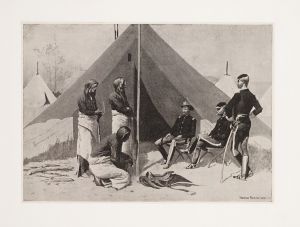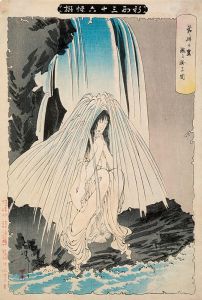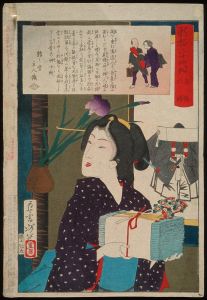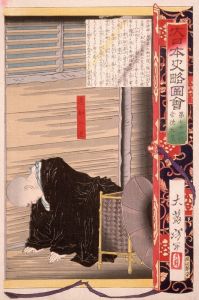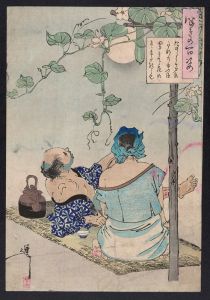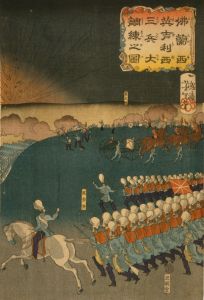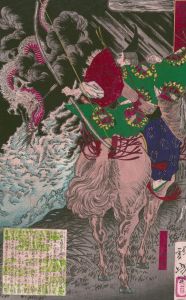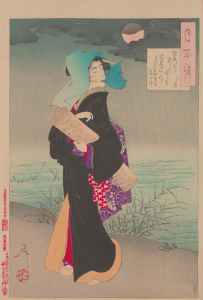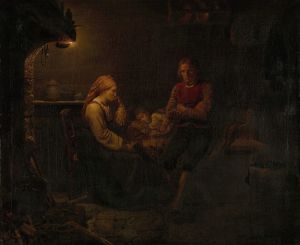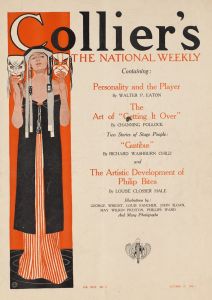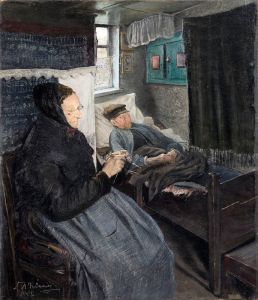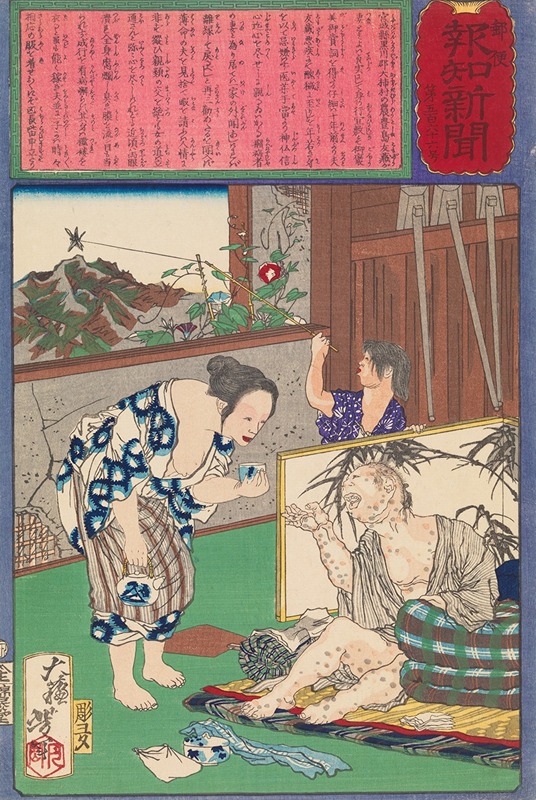
Toshima Tomiyo Who Stayed with Her Leper Husband, Tomozō
A hand-painted replica of Tsukioka Yoshitoshi’s masterpiece Toshima Tomiyo Who Stayed with Her Leper Husband, Tomozō, meticulously crafted by professional artists to capture the true essence of the original. Each piece is created with museum-quality canvas and rare mineral pigments, carefully painted by experienced artists with delicate brushstrokes and rich, layered colors to perfectly recreate the texture of the original artwork. Unlike machine-printed reproductions, this hand-painted version brings the painting to life, infused with the artist’s emotions and skill in every stroke. Whether for personal collection or home decoration, it instantly elevates the artistic atmosphere of any space.
Tsukioka Yoshitoshi was a renowned Japanese ukiyo-e artist, known for his dramatic and expressive woodblock prints. One of his notable works is "Toshima Tomiyo Who Stayed with Her Leper Husband, Tomozō," which is part of his series "New Forms of Thirty-Six Ghosts" (Shinkei Sanjūrokkaisen), created in the late 19th century. This series, completed between 1889 and 1892, showcases Yoshitoshi's fascination with supernatural themes, historical tales, and the exploration of human emotions.
The print "Toshima Tomiyo Who Stayed with Her Leper Husband, Tomozō" depicts a poignant story of loyalty and devotion. The narrative is based on a historical account from the Sengoku period, a time of social upheaval and war in Japan. Tomiyo was the wife of Tomozō, a samurai who contracted leprosy, a disease that was highly stigmatized and feared during that era. Despite the social pressures and the risk of contracting the disease herself, Tomiyo chose to stay by her husband's side, exemplifying the virtues of loyalty and compassion.
In Yoshitoshi's depiction, Tomiyo is shown attending to her husband with a sense of calm and dedication. The composition of the print highlights the emotional bond between the couple, with Tomiyo's gentle demeanor contrasting with the somber reality of their situation. Yoshitoshi's use of color and line work captures the emotional depth of the scene, drawing the viewer into the intimate moment shared by the couple.
Yoshitoshi's work often explored themes of human suffering and resilience, and this print is no exception. By choosing to illustrate the story of Tomiyo and Tomozō, Yoshitoshi not only highlights the personal sacrifice and strength of Tomiyo but also comments on broader societal issues such as the treatment of those afflicted with leprosy. During the Edo period, leprosy was a disease that led to social ostracism, and those affected were often isolated from their communities. Through this artwork, Yoshitoshi brings attention to the humanity and dignity of individuals who were marginalized by society.
The "New Forms of Thirty-Six Ghosts" series, including this print, is considered one of Yoshitoshi's masterpieces. It reflects his mature style, characterized by a blend of traditional ukiyo-e techniques and innovative approaches to storytelling. Yoshitoshi's ability to convey complex emotions and narratives through his art has cemented his legacy as one of the last great masters of the ukiyo-e tradition.
In summary, "Toshima Tomiyo Who Stayed with Her Leper Husband, Tomozō" is a powerful representation of loyalty and love in the face of adversity. Through this work, Tsukioka Yoshitoshi not only tells a compelling story but also invites reflection on the themes of compassion and societal attitudes towards illness and suffering.





